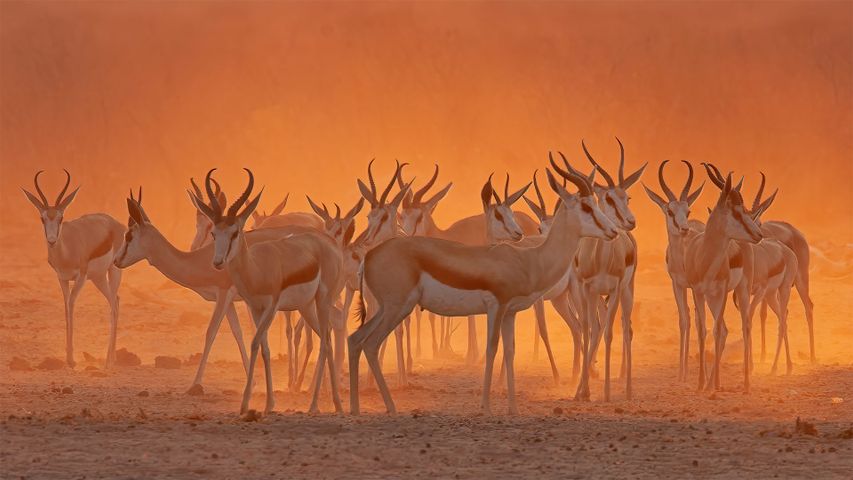Gemsbok (Oryx gazella) in sand dunes, Namibia
© Sergey Gorshkov/Minde
Surrounded by a sea of sand. Gemsbok in Namibian sand dunes
'Life, uh, finds a way.' While Dr. Malcom from 'Jurassic Park' was referring to dinosaur reproduction, his sentiment also applies to how life can be found in some of the most inhospitable places on Earth. Extremophiles are organisms that can live in extreme environments of heat, cold, or other conditions seemingly beyond what life can adapt to. Think penguins and polar bears in the frigid Arctic. Camels that can survive months in a scalding desert sans a single sip of water. Microscopic ocean organisms that thrive in environments of extreme acidity, temperature and pressure.
The Namibian gemsbok, seen here likely searching for sustenance, is accustomed to living in an inhospitable environment. This creature, also known as the oryx, is native to Southern Africa's arid regions. The gemsbok does not need drinking water to live, instead finding hydration in the vegetation it grazes upon.
Related Images
Bing Today Images






 Sandstone formations in the badlands near Caineville, Utah, United States
Sandstone formations in the badlands near Caineville, Utah, United States
 'Peace Doves' by artist Peter Walker, in Liverpool Cathedral, Liverpool, England
'Peace Doves' by artist Peter Walker, in Liverpool Cathedral, Liverpool, England
 Adélie penguin in Graham Passage, Antarctic Peninsula, Antarctica
Adélie penguin in Graham Passage, Antarctic Peninsula, Antarctica
 The Bazaruto Archipelago of Mozambique
The Bazaruto Archipelago of Mozambique
 Dust devil trails on the surface of Mars
Dust devil trails on the surface of Mars
 A school of razorfish swims for cover among the branches of a red sea whip, Kimbe Bay, New Britain Island, Papua New Guinea
A school of razorfish swims for cover among the branches of a red sea whip, Kimbe Bay, New Britain Island, Papua New Guinea
 Upper Antelope Canyon, Navajo Tribal Park, Arizona, USA
Upper Antelope Canyon, Navajo Tribal Park, Arizona, USA
 Crocus blossoms in early spring
Crocus blossoms in early spring
